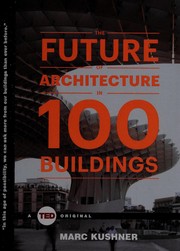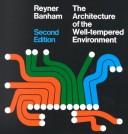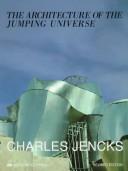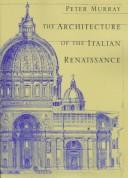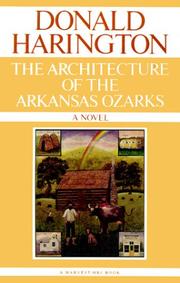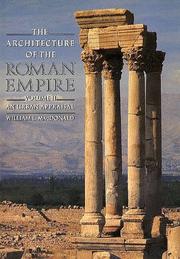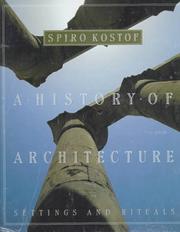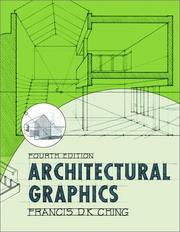Are you fascinated by the world of architecture and eager to delve deeper into its history and theory? Look no further than this curated list of the 20 best books about architecture. Whether you’re an aspiring architect, a design enthusiast, or simply curious about the built environment, these books on architecture offer a captivating exploration of iconic structures, influential architects, and the evolution of architectural styles. From insightful essays to stunning visual collections, these architecture books are sure to inspire and educate.
Contents
- 1 20 Best Books About Architecture
- 2 The Architecture of Happiness
- 3 The Future of Architecture in 100 Buildings
- 4 The Eyes of the Skin: Architecture and the Senses
- 5 The Architecture of the City
- 6 The Architecture of Light: A textbook of procedures and practices for the Architect, Interior Designer and Lighting Designer
- 7 The Architecture of the Well-Tempered Environment
- 8 The Architecture of the Jumping Universe: A Polemic: How Complexity Science is Changing Architecture and Culture
- 9 The Architecture of the Italian Renaissance
- 10 The Architecture of the Arkansas Ozarks
- 11 The Architecture of the Roman Empire: An Urban Appraisal
- 12 The Architecture of the Shakers
- 13 The Architecture of the United Arab Emirates
- 14 The Story of Architecture
- 15 Architecture: Form, Space, and Order
- 16 A History of Architecture
- 17 Towards a New Architecture
- 18 Architectural Graphics
- 19 Building Construction Illustrated
- 20 101 Things I Learned in Architecture School
- 21 Complexity and Contradiction in Architecture
- 22 Conclusion
- 23
- 24 Bad Mothers Books: A Curated 2024 Updated List
- 25 Top 20 Best Books on The Desert:2024 Edition
- 26 The 20 Spies Books: Best 2024 Update and Review
20 Best Books About Architecture
The Architecture of Happiness
by Alain de Botton
The Architecture of Happiness by Alain de Botton is a captivating exploration of the profound impact that our surroundings have on our well-being. In this insightful book on architecture, de Botton delves into the psychology of design, discussing how our built environment can influence our emotions and sense of fulfillment. Through a blend of philosophy, art history, and psychology, the author invites readers to consider the ways in which architecture shapes our lives, relationships, and inner peace. With eloquent prose and thought-provoking insights, The Architecture of Happiness is a must-read for anyone interested in the intersection of beauty, design, and human happiness.
The Future of Architecture in 100 Buildings
by Marc Kushner
The Future of Architecture in 100 Buildings by Marc Kushner is a captivating book on architecture that explores the cutting-edge designs and innovations shaping the built environment. Through stunning visuals and insightful commentary, Kushner celebrates the diversity and creativity of contemporary architecture, showcasing 100 groundbreaking structures from around the world. From sustainable skyscrapers and innovative museums to futuristic homes and public spaces, this book about architecture offers a fascinating glimpse into the future of the built world. Whether you’re an architecture enthusiast or simply curious about the evolving urban landscape, The Future of Architecture in 100 Buildings is a must-read that will inspire and provoke thought about the endless possibilities of architecture.
The Eyes of the Skin: Architecture and the Senses
by Juhani Pallasmaa
The Eyes of the Skin: Architecture and the Senses by Juhani Pallasmaa is a thought-provoking and insightful book on architecture that explores the sensory experience of built environments. Pallasmaa delves into the idea that architecture is not just a visual art, but a multi-sensory experience that engages all of our senses. He argues that our modern focus on visual stimuli has led to a neglect of our other senses, and he calls for a more holistic approach to architectural design that considers the tactile, auditory, and olfactory aspects of spaces. Through engaging prose and captivating examples, Pallasmaa challenges the reader to reconsider their understanding of architecture and the impact it has on our everyday lives. This book about architecture is essential reading for anyone interested in the sensory and experiential aspects of the built environment.
The Architecture of the City
by Aldo Rossi
The Architecture of the City by Aldo Rossi is a renowned book about urban design and the built environment. This influential architecture book explores the relationship between the city and its architecture, offering a unique perspective on the role of history, memory, and collective identity in shaping urban landscapes. Aldo Rossi’s insightful analysis delves into the significance of urban form and the evolution of cities over time, making it a must-read for anyone interested in the intricacies of urban planning and design. With its thought-provoking insights and engaging prose, The Architecture of the City is a fundamental read for anyone interested in the built environment and the interplay between architecture and urban spaces.
The Architecture of Light: A textbook of procedures and practices for the Architect, Interior Designer and Lighting Designer
by Sage Russell
The Architecture of Light is a comprehensive book on architecture that delves into the intricate details of lighting design for architects, interior designers, and lighting designers. Written by Sage Russell, this textbook provides a thorough overview of the procedures and practices essential for creating captivating and functional lighting designs within architectural spaces. With a focus on the interplay of light, shadow, and form, this architecture book offers valuable insights into the technical aspects of lighting, as well as the artistic and emotional impact it has on the built environment. Whether you are a professional in the field or a student aspiring to specialize in lighting design, The Architecture of Light is a must-have resource that will enhance your understanding and appreciation of the role of light in architectural spaces.
The Architecture of the Well-Tempered Environment
by Reyner Banham
The Architecture of the Well-Tempered Environment, written by Reyner Banham, is a captivating book on architecture that explores the relationship between technology and design. Banham delves into the ways in which buildings and environments are shaped by the advances in heating, cooling, and ventilation systems. He examines how these systems have influenced architectural styles and the way people interact with their surroundings. Banham’s insightful analysis and engaging writing style make this book about architecture a must-read for anyone interested in the intersection of technology and the built environment. Whether you’re a student, professional, or enthusiast, The Architecture of the Well-Tempered Environment offers a thought-provoking exploration of the impact of environmental control systems on our architectural world.
The Architecture of the Jumping Universe: A Polemic: How Complexity Science is Changing Architecture and Culture
by Charles Jencks
The Architecture of the Jumping Universe: A Polemic by Charles Jencks is a thought-provoking book about architecture that explores the intersection of complexity science and architecture. Jencks challenges traditional notions of architecture and argues that the field is being transformed by the principles of complexity science. He delves into the ways in which this scientific approach is reshaping architectural design, urban planning, and cultural perspectives. Through engaging prose and insightful analysis, Jencks invites readers to reconsider their understanding of architecture and its impact on society. This architecture book is a must-read for those interested in the cutting-edge developments within the field and the broader cultural implications of these changes.
The Architecture of the Italian Renaissance
by Peter Murray
The Architecture of the Italian Renaissance by Peter Murray is a captivating and comprehensive book about the architectural achievements of the Italian Renaissance. Murray delves into the rich history and intricate designs of this influential period, exploring the innovative construction techniques and iconic buildings that defined the era. Through detailed analysis and captivating illustrations, the book provides a thorough understanding of the evolution of Italian Renaissance architecture and its lasting impact on the world of art and design. Whether you are a student of architecture or simply fascinated by the beauty of historical buildings, this architecture book is a must-read for anyone looking to explore the captivating world of Italian Renaissance architecture.
The Architecture of the Arkansas Ozarks
by Donald Harington
The Architecture of the Arkansas Ozarks by Donald Harington is a captivating exploration of the unique and often overlooked architectural heritage of the Ozarks region. This fascinating book delves into the distinctive vernacular buildings and structures that reflect the rich history and culture of the area, offering a deep insight into the architectural traditions of the Arkansas Ozarks. With Harington’s insightful prose and thorough research, readers are treated to a comprehensive examination of the diverse architectural styles, building techniques, and materials that have shaped the landscape of the Ozarks. Whether you’re a history enthusiast, a lover of vernacular architecture, or simply curious about the built environment, this book about architecture is a must-read for anyone interested in the rich architectural tapestry of the Arkansas Ozarks.
The Architecture of the Roman Empire: An Urban Appraisal
by William L. MacDonald
The Architecture of the Roman Empire: An Urban Appraisal by William L. MacDonald is a fascinating book about architecture that provides a comprehensive overview of the architectural achievements of the Roman Empire. MacDonald takes readers on a journey through the ancient urban landscapes, exploring the grandeur and innovation of Roman architecture. From the iconic colosseums to the intricate aqueducts, this architecture book delves into the engineering marvels and artistic flourishes that defined Roman construction. MacDonald’s meticulous research and engaging writing style bring the ancient cities to life, offering a rich understanding of how architecture shaped the urban environment of the Roman Empire. Whether you’re a history enthusiast or an architecture aficionado, this book is a must-read for anyone interested in the enduring legacy of Roman architecture.
The Architecture of the Shakers
by Julie Nicoletta
The Architecture of the Shakers by Julie Nicoletta is a captivating book on Shaker architecture. Nicoletta explores the unique and innovative designs of the Shaker communities, emphasizing their simplicity, functionality, and harmonious integration with nature. The book delves into the history and philosophy behind the Shaker architecture, highlighting their use of natural materials, clean lines, and efficient use of space. With stunning photography and detailed analysis, Nicoletta offers a comprehensive look at the buildings, furniture, and landscapes created by the Shakers. Whether you’re an architecture enthusiast or simply curious about the Shaker lifestyle, this book about architecture will inspire and inform, shedding light on the enduring legacy of this remarkable community.
The Architecture of the United Arab Emirates
by Salma Samar Damluji
The Architecture of the United Arab Emirates by Salma Samar Damluji is a captivating exploration of the diverse and striking architectural heritage of the UAE. Damluji, a renowned authority on Middle Eastern architecture, delves into the rich history and cultural influences that have shaped the country’s built environment. Through vivid descriptions and stunning photographs, the book provides a comprehensive insight into the traditional and contemporary architectural marvels of the UAE. From majestic mosques and palaces to modern skyscrapers and urban developments, this book about architecture offers a compelling narrative of the nation’s architectural evolution. Damluji’s meticulous research and profound understanding of the subject make this architecture book a fascinating and insightful read for enthusiasts and scholars alike.
The Story of Architecture
by Jonathan Glancey
The Story of Architecture by Jonathan Glancey is a captivating book about the history of building design and construction. Glancey takes readers on a journey through the evolution of human structures, from ancient civilizations to modern skyscrapers. This comprehensive architecture book explores the cultural, social, and technological influences that have shaped architectural styles and techniques over the centuries. Glancey’s engaging narrative and insightful analysis make this book on architecture a must-read for anyone interested in the built environment. Whether you’re a seasoned architect or simply fascinated by the structures that surround us, The Story of Architecture offers a rich and informative exploration of the world of building design.
Architecture: Form, Space, and Order
by Francis D. K. Ching
Architecture: Form, Space, and Order by Francis D.K. Ching is a seminal book on architecture that explores the fundamental principles of architectural design. Through clear illustrations and concise explanations, Ching delves into the essential elements of architecture, including form, space, and order. The book provides a comprehensive overview of architectural concepts, from basic elements such as point, line, and plane to more complex spatial relationships and design principles. With its accessible language and beautiful visual examples, this book about architecture is a valuable resource for students, architects, and anyone interested in understanding the fundamental principles that shape the built environment. Whether you’re a design enthusiast or a professional in the field, Architecture: Form, Space, and Order offers a rich exploration of the principles that define architectural design.
A History of Architecture
by Spiro Kostof
A History of Architecture by Spiro Kostof is a captivating book about architecture that takes readers on a fascinating journey through the evolution of human-built environments. Kostof’s engaging narrative and insightful analysis bring to life the diverse styles, techniques, and cultural influences that have shaped architecture throughout the ages. From ancient wonders like the Pyramids of Giza to the soaring skyscrapers of the modern era, this comprehensive architecture book provides a rich tapestry of architectural history. With vivid descriptions and stunning illustrations, Kostof’s work is a must-read for anyone passionate about the built environment and its impact on society. Whether you’re a student, professional, or simply an enthusiast of architecture, this book offers a compelling exploration of the world’s most iconic structures and the stories behind them.
Towards a New Architecture
by Le Corbusier
Towards a New Architecture by Le Corbusier is a groundbreaking book on architecture that challenges traditional design principles and offers a visionary perspective on the future of urban planning and building construction. With a bold and innovative approach, the author advocates for functional, efficient, and aesthetically pleasing design that responds to the needs of modern society. Through engaging prose and captivating illustrations, Le Corbusier explores the concept of “machine for living” and the integration of technology and nature in architectural design. This influential architecture book continues to inspire architects and designers, offering timeless insights into the evolution of the built environment and the potential for creating harmonious and sustainable urban spaces.
Architectural Graphics
by Francis D. K. Ching
Architectural Graphics by Francis D.K. Ching is a comprehensive and visually stunning book on architecture. With clear, concise explanations and beautiful illustrations, this book about architecture covers everything from basic drafting techniques to advanced 3D modeling. Ching’s expertise shines through as he explores the fundamental principles of architectural graphics, making it an essential resource for students and professionals alike. Whether you’re learning to draw floor plans or create intricate renderings, this architecture book provides the tools and techniques to elevate your design skills. With its timeless wisdom and practical guidance, Architectural Graphics is a must-have for anyone passionate about the art and science of building design.
Building Construction Illustrated
by Francis D. K. Ching
Building Construction Illustrated by Francis D. K. Ching is a renowned book on architecture that provides a comprehensive and visually engaging overview of the principles and practices of building construction. With its clear and concise illustrations, this architecture book is an invaluable resource for students, professionals, and anyone interested in understanding the complexities of construction. Ching’s meticulous attention to detail and his ability to explain complex concepts in an accessible manner make this book about architecture a must-have for anyone involved in the built environment. Whether you’re a novice or an experienced practitioner, Building Construction Illustrated is an indispensable guide that will deepen your understanding of the built environment and inspire your architectural endeavors.
101 Things I Learned in Architecture School
by Matthew Frederick
101 Things I Learned in Architecture School by Matthew Frederick is a concise and insightful book about the world of architecture. With easy-to-understand explanations and charming illustrations, this book provides a fundamental understanding of architectural principles, design concepts, and practical tips for aspiring architects and anyone interested in the built environment. From the basics of form and space to the complexities of zoning laws and building codes, this book covers a wide range of topics in a clear and accessible manner. Whether you’re a student, a professional, or simply curious about the field of architecture, this book offers valuable knowledge and inspiration. It’s an essential read for anyone looking to deepen their understanding of the built environment and gain a deeper appreciation for the art and science of architecture.
Complexity and Contradiction in Architecture
by Robert Venturi
Complexity and Contradiction in Architecture by Robert Venturi is a groundbreaking book on architecture that challenges the traditional notions of simplicity and harmony in design. Venturi argues that architecture should embrace complexity and contradiction, rather than seeking uniformity and coherence. Through thought-provoking examples and insightful analysis, the book examines the diverse layers and competing elements that make up the built environment, celebrating the richness and diversity of architectural expression. Venturi’s influential work has had a profound impact on the field of architecture, inspiring a new generation of designers to embrace the complexities and contradictions inherent in the built world. This book about architecture is a must-read for anyone interested in exploring the dynamic and multifaceted nature of architectural design.
Conclusion
Exploring the world of Architecture through literature can be a fascinating journey, and these 20 best books about architecture are essential reads for anyone passionate about the subject. From historical to contemporary perspectives, these books offer in-depth insights, stunning visuals, and thought-provoking analysis that will inspire and educate architects, students, and enthusiasts alike. Whether you’re seeking a comprehensive survey or a deep dive into a specific aspect of architecture, these books are sure to enrich your understanding and appreciation of the built environment.
Which Architecture book is best?
The best book on Architecture can vary with personal preference, but three widely recommended titles are:
- The Architecture of Happiness by Alain de Botton,
- The Future of Architecture in 100 Buildings by Marc Kushner,
- The Eyes of the Skin: Architecture and the Senses by Juhani Pallasmaa.
Each offers valuable insights and could be a great starting point.
What are the best books to learn about Architecture?
For those looking to learn about Architecture, there is a wealth of literature that can provide a comprehensive understanding of the subject. Some of the most highly recommended books include:
- The Architecture of Happiness by Alain de Botton,
- The Future of Architecture in 100 Buildings by Marc Kushner,
- The Eyes of the Skin: Architecture and the Senses by Juhani Pallasmaa,
- The Architecture of the City by Aldo Rossi,
- The Architecture of Light: A textbook of procedures and practices for the Architect, Interior Designer and Lighting Designer by Sage Russell,
- The Architecture of the Well-Tempered Environment by Reyner Banham,
- The Architecture of the Jumping Universe: A Polemic: How Complexity Science is Changing Architecture and Culture by Charles Jencks,
- The Architecture of the Italian Renaissance by Peter Murray,
- The Architecture of the Arkansas Ozarks by Donald Harington,
- The Architecture of the Roman Empire: An Urban Appraisal by William L. MacDonald
These books offer a range of perspectives on Architecture, covering various aspects and approaches to the subject.
What are the best books on Architecture?
The best books on Architecture include:
- The Architecture of Happiness by Alain de Botton,
- The Future of Architecture in 100 Buildings by Marc Kushner,
- The Architecture of the Shakers by Julie Nicoletta,
- The Architecture of the United Arab Emirates by Salma Samar Damluji,
- The Architecture of the Italian Renaissance by Peter Murray,
- The Architecture of the Well-Tempered Environment by Reyner Banham.
Each offers unique insights into the subject. While these books on the topic of Architecture are highly regarded, it’s important to note that any list of ‘best’ books is subjective and reflects a range of opinions.
What are the best Architecture books of all time?
Choosing the best Architecture books of all time can vary depending on who you ask, but seven titles that are often celebrated include
- The Architecture of Happiness by Alain de Botton,
- The Future of Architecture in 100 Buildings by Marc Kushner,
- The Architecture of Light: A textbook of procedures and practices for the Architect, Interior Designer and Lighting Designer by Sage Russell,
- The Architecture of the Italian Renaissance by Peter Murray,
- The Architecture of the Roman Empire: An Urban Appraisal by William L. MacDonald,
- The Architecture of the United Arab Emirates by Salma Samar Damluji,
- and The Architecture of the Shakers by Julie Nicoletta.
Each of these books has made a significant impact in the field of Architecture and continues to be influential today.


